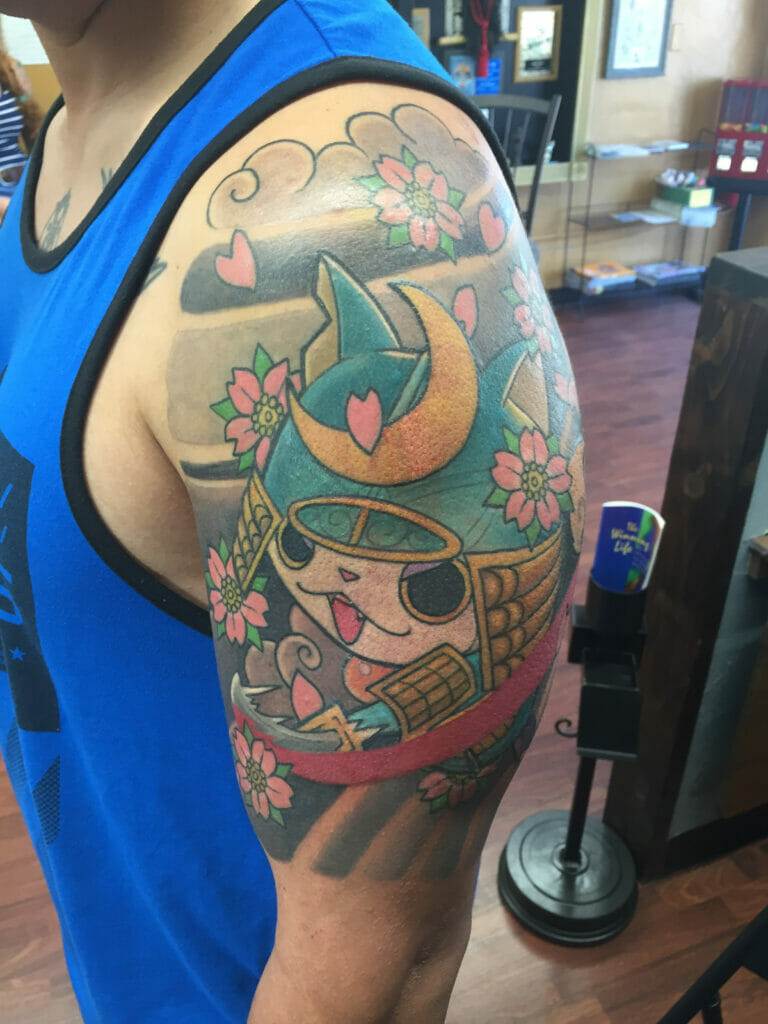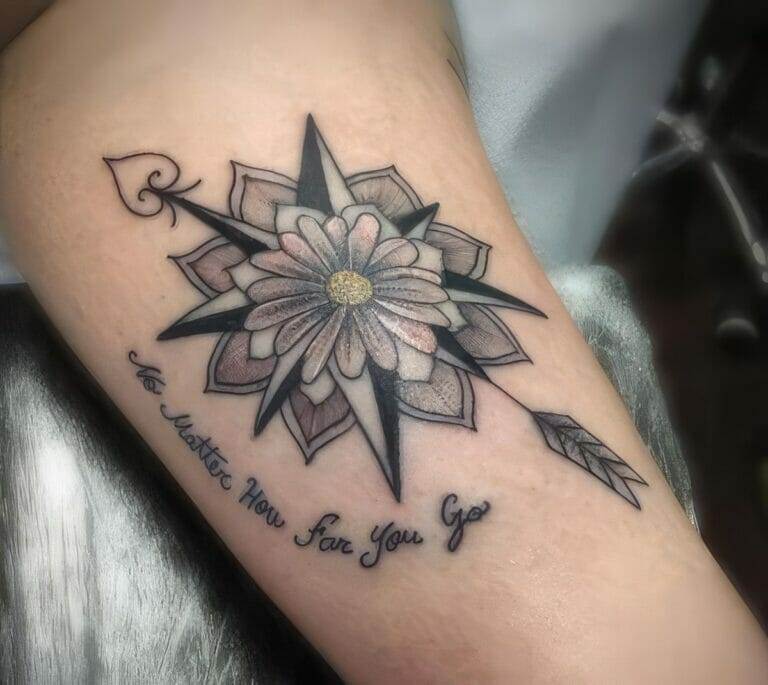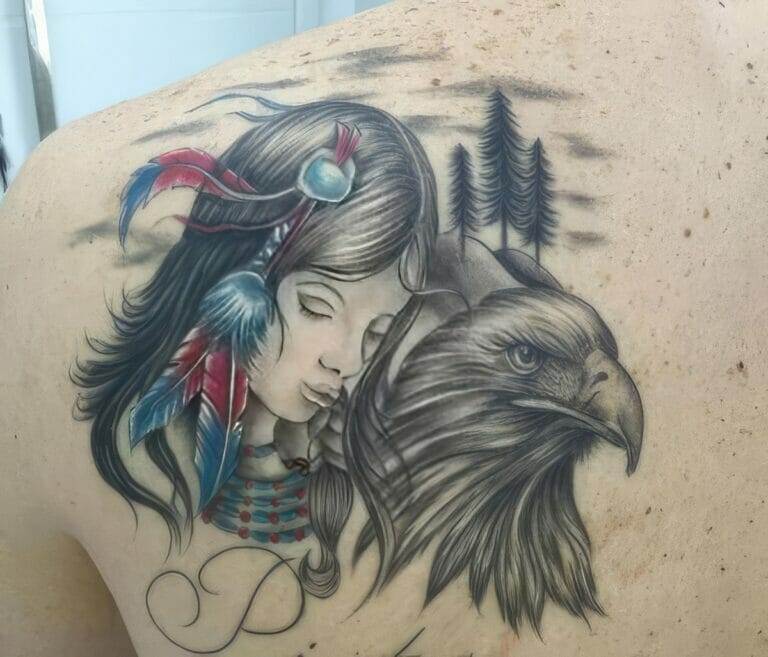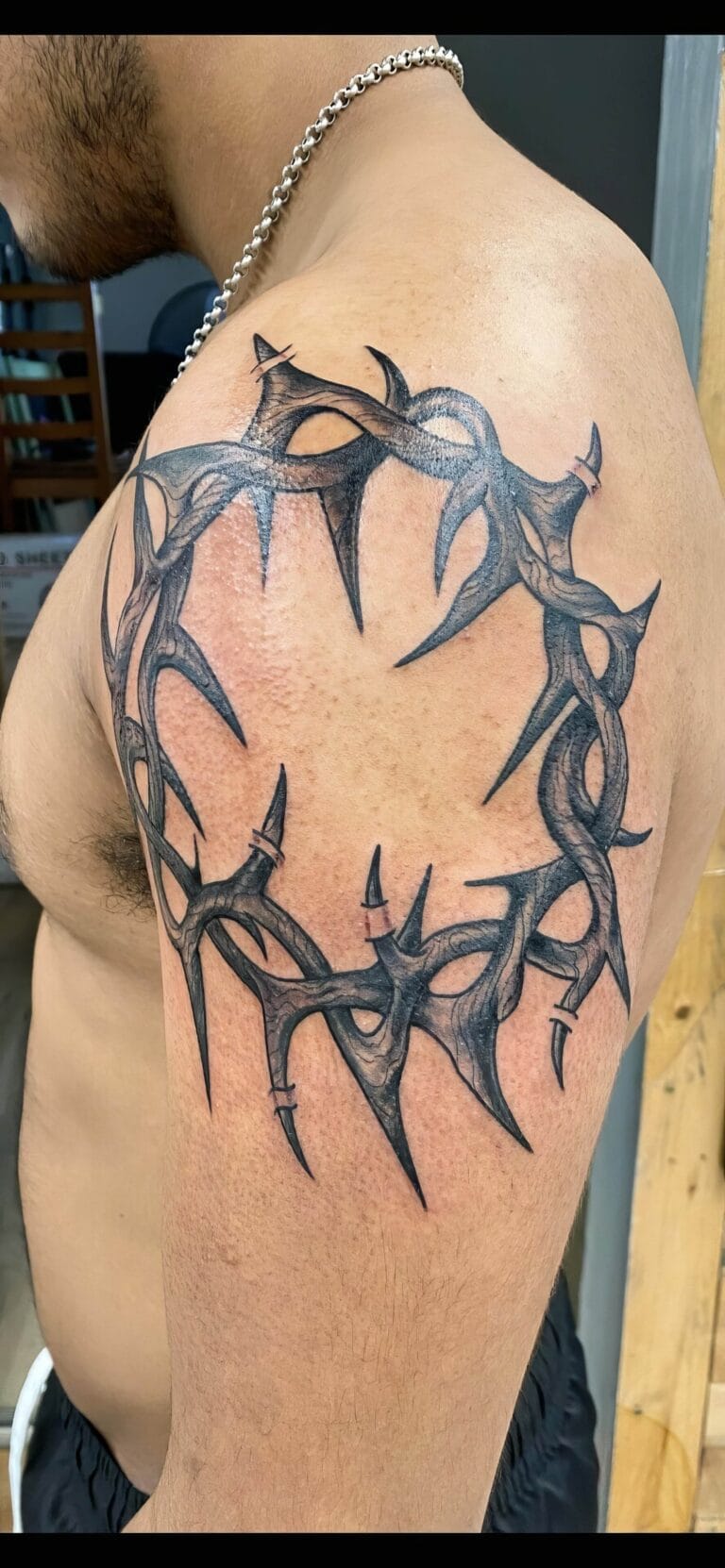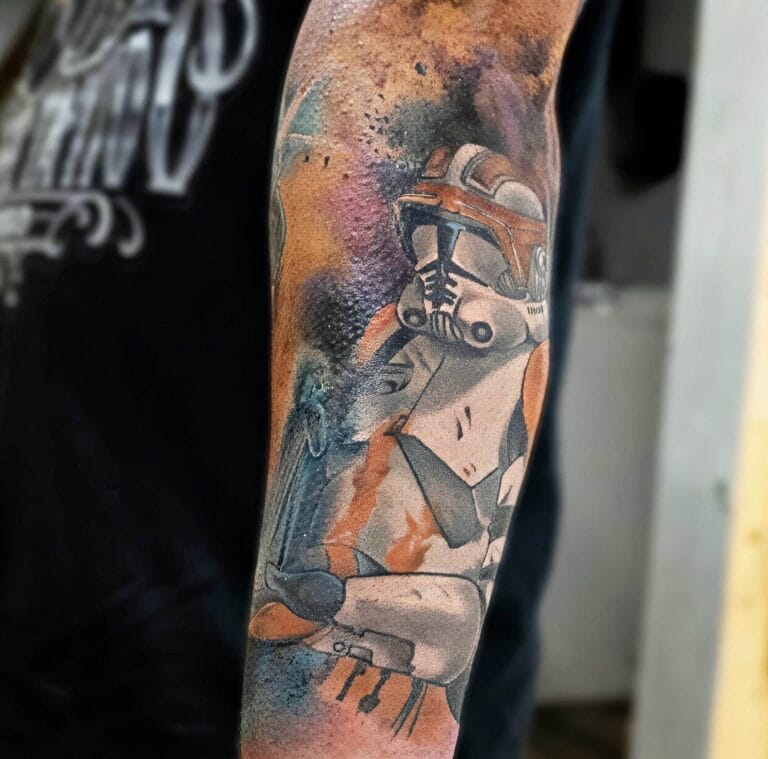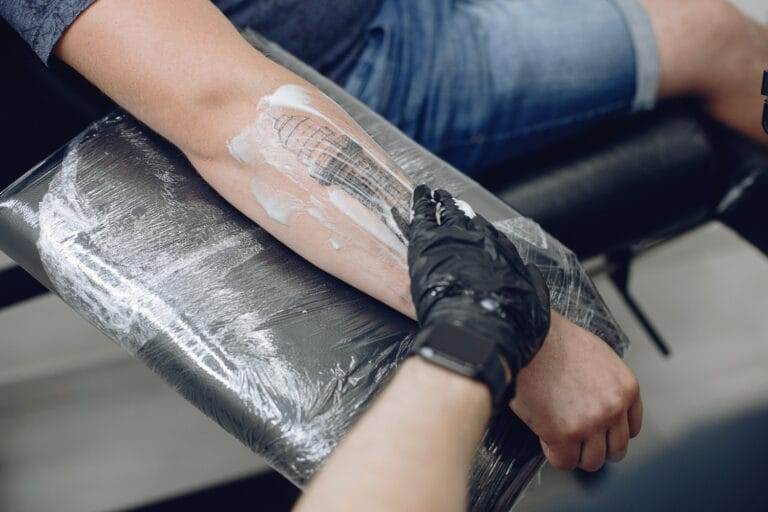
Illustrative tattoos have become increasingly popular in recent years, as more and more people are drawn to the idea of using their bodies as a canvas for visual storytelling. These tattoos are characterized by their intricate designs, bold lines, and vibrant colors, which come together to create stunning works of art. Whether it’s a small symbol or a full sleeve, illustrative tattoos have the power to convey a message or tell a story through visual imagery. In this article, we will explore the world of illustrative tattoos, from their history and evolution to the different styles and techniques used by tattoo artists today.
The Power of Visual Storytelling in Tattoos
One of the most compelling aspects of illustrative tattoos is their ability to tell a story or convey a message through visual imagery. Unlike other forms of art, tattoos are permanent and become a part of the wearer’s identity. This makes them an incredibly powerful medium for self-expression and storytelling.
For example, a person may choose to get an illustrative tattoo that represents a significant event or milestone in their life. This could be anything from a birthdate or wedding anniversary to a symbol that represents overcoming personal struggles. By visually representing these experiences on their body, the wearer is able to carry their story with them wherever they go.
Another way that illustrative tattoos can tell a story is through the use of symbolism and metaphor. Tattoo artists often incorporate elements such as animals, flowers, or mythical creatures into their designs to represent certain qualities or emotions. For example, a lion may symbolize strength and courage, while a rose may represent love and beauty. By combining these symbols in a meaningful way, tattoo artists are able to create designs that speak to the wearer’s personal narrative.
The History of Illustrative Tattoos
The art of tattooing has been practiced for thousands of years, with evidence of tattooed bodies dating back to ancient civilizations such as Egypt and China. However, the concept of illustrative tattoos as we know them today has its roots in the traditional tattooing practices of indigenous cultures.
In Polynesia, for example, tattoos were used to mark important milestones in a person’s life, such as reaching adulthood or achieving a certain status within the community. These tattoos often featured intricate patterns and symbols that held deep cultural and spiritual significance.
In the Western world, illustrative tattoos gained popularity in the late 19th and early 20th centuries, thanks to the work of tattoo artists such as Norman Collins (better known as Sailor Jerry) and Bert Grimm. These artists developed a style known as American traditional, which featured bold lines, vibrant colors, and iconic imagery such as anchors, roses, and eagles.
Over time, illustrative tattoos have continued to evolve and incorporate elements from various artistic movements, such as Art Nouveau, Art Deco, and Surrealism. Today, there are countless styles and techniques used by tattoo artists around the world, each with its own unique characteristics and influences.
The Different Styles of Illustrative Tattoos
Illustrative tattoos encompass a wide range of styles and techniques, each with its own distinct characteristics. Some of the most popular styles include neo-traditional, watercolor, and blackwork.
Neo-traditional tattoos are a modern take on the traditional American style. They feature bold lines and vibrant colors, but often incorporate more intricate details and shading. Neo-traditional tattoos often depict animals, flowers, or mythical creatures, and are known for their highly stylized and exaggerated designs.
Watercolor tattoos are characterized by their soft edges and vibrant colors that resemble watercolor paintings. These tattoos often feature abstract or nature-inspired designs, such as flowers or landscapes. Watercolor tattoos are highly sought after for their unique and ethereal appearance.
Blackwork tattoos are created using only black ink, and often feature bold, graphic designs with intricate patterns and shading. These tattoos can range from simple geometric shapes to highly detailed illustrations. Blackwork tattoos are known for their striking contrast and can create a bold and dramatic effect.
Choosing the Right Illustrative Tattoo Design
When choosing an illustrative tattoo design, it’s important to consider your personal style and preferences. Think about what images or symbols resonate with you and what story you want to tell through your tattoo. Consider the size and placement of the tattoo, as well as the colors and style that you prefer.
It’s also a good idea to research different tattoo artists and their portfolios to find someone who specializes in the style you’re interested in. Look for artists who have experience creating illustrative tattoos and whose work aligns with your aesthetic preferences. Don’t be afraid to reach out to artists for a consultation or to ask for references from previous clients.
Remember that getting a tattoo is a personal decision, and it’s important to choose a design that you will be happy with for years to come. Take your time to find the right design and artist, and don’t be afraid to ask questions or seek advice from professionals in the industry.
The Significance of Color in Illustrative Tattoos
Color plays a significant role in illustrative tattoos, as it can enhance the visual impact of a design and add depth and dimension to the artwork. Different colors can also carry symbolic meanings, adding another layer of storytelling to the tattoo.
For example, warm colors such as red, orange, and yellow are often associated with energy, passion, and vitality. These colors can be used to represent strength, love, or ambition in a tattoo design.
Cool colors such as blue, green, and purple are often associated with calmness, tranquility, and spirituality. These colors can be used to represent peace, healing, or introspection in a tattoo design.
Neutral colors such as black, white, and gray can be used to create contrast and add depth to a tattoo design. These colors can also be used to create a more minimalist or monochromatic look.
When choosing colors for an illustrative tattoo, it’s important to consider how they will interact with your skin tone and the overall composition of the design. Work with your tattoo artist to choose a color palette that complements your skin tone and brings out the best in the artwork.
The Role of Placement in Illustrative Tattoos
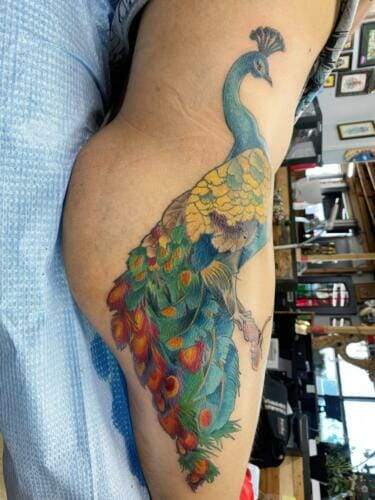
The placement of an illustrative tattoo can greatly affect its overall appearance and meaning. Different parts of the body have different shapes and contours, which can influence how a tattoo is perceived.
For example, a small illustrative tattoo may be best suited for a delicate area such as the wrist or ankle, where it can be easily hidden or shown off depending on the wearer’s preference. On the other hand, a larger illustrative tattoo may be better suited for a more expansive area such as the back or thigh, where there is more space to showcase the intricate details of the design.
The placement of a tattoo can also affect its symbolism or meaning. For example, a tattoo on the chest or heart area may represent love or passion, while a tattoo on the forearm or hand may symbolize strength or resilience.
When choosing the placement of an illustrative tattoo, it’s important to consider factors such as visibility, comfort, and future plans. Think about how the tattoo will look in different situations, such as at work or during social events. Consider whether you want the tattoo to be easily visible or more discreet. It’s also important to think about how the tattoo will age over time and whether it will still be meaningful to you in the future.
The Importance of Finding the Right Tattoo Artist
Finding a skilled and experienced tattoo artist who specializes in illustrative tattoos is crucial to ensuring that you get a high-quality and visually stunning tattoo. Tattooing is a highly specialized art form that requires technical skill, creativity, and attention to detail. It’s important to choose an artist who not only has the technical skills to execute your design but also understands your vision and can bring it to life.
When researching tattoo artists, take the time to look at their portfolios and see if their style aligns with your aesthetic preferences. Look for artists who have experience creating illustrative tattoos and whose work demonstrates a high level of craftsmanship and attention to detail. It’s also a good idea to read reviews or ask for recommendations from friends or other tattoo enthusiasts.
Once you’ve narrowed down your options, reach out to the artists for a consultation. This will give you an opportunity to discuss your design ideas, ask questions, and get a sense of the artist’s personality and communication style. It’s important to feel comfortable and confident in your choice of artist, as you will be working closely with them throughout the tattooing process.
The Process of Getting an Illustrative Tattoo
The process of getting an illustrative tattoo typically involves several steps, from the initial consultation to the aftercare. Here is a general overview of what you can expect:
1. Consultation: During the consultation, you will meet with your tattoo artist to discuss your design ideas, placement, size, and any other details. This is also a good time to ask any questions or address any concerns you may have.
2. Design: Once you’ve agreed on the design, your tattoo artist will create a stencil or drawing of the design for you to approve. This will give you an idea of how the final tattoo will look on your body.
3. Preparation: On the day of your tattoo appointment, make sure to eat a good meal and stay hydrated. Avoid alcohol or caffeine, as they can thin your blood and make the tattooing process more difficult.
4. Tattooing: The tattooing process itself involves the use of a tattoo machine or needle to deposit ink into the skin. Your tattoo artist will clean and sterilize the area, apply a stencil or freehand the design, and then begin the tattooing process. The length of the tattooing process will depend on the size and complexity of the design.
5. Aftercare: After the tattoo is complete, your artist will clean and bandage the area. They will also provide you with aftercare instructions, which may include washing the tattoo with mild soap and water, applying a thin layer of ointment or moisturizer, and avoiding direct sunlight or soaking in water for a certain period of time.
Caring for Your Illustrative Tattoo
Proper aftercare is crucial to ensuring that your illustrative tattoo heals properly and maintains its vibrancy. Here are some tips to help you care for your tattoo:
1. Follow your artist’s aftercare instructions: Your tattoo artist will provide you with specific aftercare instructions based on their preferred method. It’s important to follow these instructions carefully to avoid infection or other complications.
2. Keep the tattoo clean: Gently wash your tattoo with mild soap and water, using your hands or a clean cloth. Avoid scrubbing or rubbing the tattoo, as this can irritate the skin.
3. Apply ointment or moisturizer: After washing, apply a thin layer of ointment or moisturizer recommended by your artist. This will help keep the skin hydrated and prevent it from drying out.
4. Avoid direct sunlight: Protect your tattoo from direct sunlight, as UV rays can fade the colors and cause the tattoo to blur over time. If you need to be in the sun, make sure to apply sunscreen with a high SPF to protect your tattoo.
5. Avoid soaking in water: Avoid swimming pools, hot tubs, or soaking in water for at least two weeks after getting your tattoo. This will help prevent infection and allow the tattoo to heal properly.
6. Avoid picking or scratching: It’s normal for your tattoo to scab or peel during the healing process. However, it’s important to resist the urge to pick or scratch at the scabs, as this can cause scarring or damage to the tattoo.
7. Be patient: It takes time for a tattoo to fully heal and for the colors to settle. Be patient and allow your tattoo to heal naturally, without rushing the process.
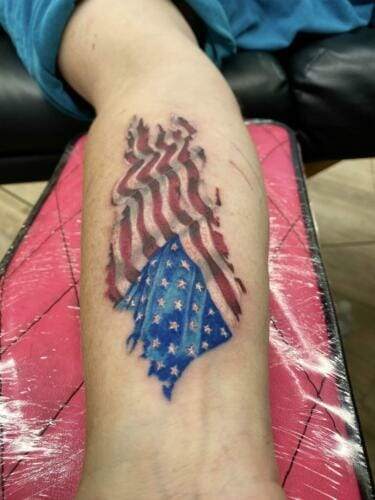
The Lasting Impact of Illustrative Tattoos
Illustrative tattoos have become a popular form of visual storytelling, allowing individuals to express their personal narratives and create lasting works of art on their bodies. From their origins in indigenous cultures to their evolution in the Western world, illustrative tattoos have continued to captivate and inspire people around the globe.
Whether it’s a small symbol or a full sleeve, illustrative tattoos have the power to convey a message or tell a story through visual imagery. They can represent significant events or milestones in a person’s life, or they can incorporate symbolism and metaphor to convey deeper meanings.
Choosing the right illustrative tattoo design involves considering factors such as personal style, size, placement, and color. It’s important to find a skilled and experienced tattoo artist who specializes in illustrative tattoos and can bring your vision to life.
Once you have your illustrative tattoo, proper aftercare is crucial to ensuring that it heals properly and maintains its vibrancy. Follow your artist’s aftercare instructions and avoid picking or scratching at the tattoo during the healing process.
In conclusion, illustrative tattoos are a powerful form of self-expression and storytelling that have the ability to leave a lasting impact on both the wearer and those who view them. They are a testament to the artistry and skill of tattoo artists around the world, who continue to push the boundaries of what is possible in the world of tattooing. So, if you’re considering getting an illustrative tattoo, take the time to research and find the right design and artist for you, and embrace the artistry and creativity that comes with this unique form of self-expression.

